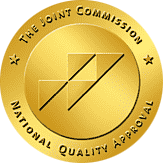What is Contingent Workforce Management?- An Ultimate Guide for Employers

Overview
According to a report from the U.S. Government Accountability, about 40% of the U.S. workforce is dominated by contingent workers. It is further evident that most organizations have built their workforce with about 18% of temporary staff, following flexible employment norms and policies. While the contingent workforce has brought about a major shift in the employment landscape post-COVID-19, many employers are still unsure of the methods through which they can implement and engage contingent workers in their businesses.This article will help us gaining an insight into the best four methods that can be utilized by employers to optimize their contingent workforce planning and management.
Understanding contingent workforce management
Contingent workforce management is a tactical approach initiated by employers to involve and manage non-permanent employees in their businesses. Typically dominated by freelancers, independent contractors, or contractual staff sourced through staffing agencies, the contingent workforce allows organizations to meet project-specific requirements or immediate business needs. Contingent workforce management envelops all the processes and policies pertaining to the screening, sourcing, onboarding, and retaining of contingent workers.
By undertaking a strategic approach to contingent workforce management, organizations can ensure that their business goals and objectives are perfectly intact with the workforce policies and processes. The primary benefit of establishing and managing a contingent workforce is that it helps businesses in attaining flexibility and adaptability in changing market conditions, thereby achieving a competitive edge in the industry.
Read more: 21 reasons why businesses are choosing to work with contingent workers
Best methods for optimizing contingent workforce planning and management
To ensure that your organization is getting the best possible value from your temporary workforce, it is essential that you understand and utilize the contingent workforce management best practices. It is equally important to develop and follow a well-defined and structured program for optimizing your contingent workforce planning and management.
The four best methods that you can follow and implement for the optimization of your contingent labor pool are given below.
- Partnering with specialized external parties or staffing agencies
Outsourcing contingent workers by means of specialized staffing agencies or third-party vendors enables organizations to reduce the burden related to direct hiring, thereby concentrating on their core business goals and operational areas. When you choose to partner with an experienced staffing agency, it takes control of all the significant aspects of hiring, including screening and sourcing of candidates, onboarding and training selected candidates, managing and evaluating their performance, and maintaining compliance with employment laws and regulatory frameworks.
- Streamlining processes with a Managed Services Provider (MSP)
A Managed Service Provider (MSP) is often preferred by organizations for the effective management of a contingent workforce because of the centralized access it grants businesses. As an outsourced third-party vendor, MSPs assist in managing a part or entire of your contingent workforce recruitment and management. With an end-to-end solution, MSPs help streamline and standardize the contingent workforce management processes, including Vendor Management System (VMS), selection of vendors, negotiation of contracts, onboarding of employees, and adherence to compliance.
- Centralizing workflows with a Vendor Management System (VMS)
A Vendor Management System (VMS) is a software platform that automates and centralizes the overall process of contingent workforce management. This software platform automates manual administrative tasks associated with hiring, such as posting job advertisements, screening resumes of candidates, negotiating contracts, tracking attendance, managing invoices, onboarding, and offboarding employees, etc. This diminishes the administrative burden on employers and enables them to tackle other essential operational areas with more efficiency. The centralization of the workforce system also provides employers with real-time visibility, assisting them to make improved decisions and design more effective contingent workforce management strategies.
- Setting up strong internal processes and systems
Besides counting on third-party vendors or staffing agencies for effective contingent workforce management, organizations must consider designing and implementing robust internal policies and systems for their contingent workers. For instance, communication is the key to collaboration for the contingent workforce with an organization’s existing teams. To ensure proper collaboration, you need to implement and maintain open communication channels and make the contingent workers feel a part of your team, just like your permanent hires. A well-structured in-house plan for a contingent workforce will give you a better alignment of your business goals with workforce strategies.
Conclusion
The article helps to conclude that a significant number of organizations today have become reliant on contingent workers due to the endless possibilities and benefits they bring to their businesses. To utilize the possibilities and enjoy the benefits of a contingent workforce, employers need to optimize their workforce planning and management by using certain methods. The best methods with which they can do so include collaborating with expert staffing agencies or third-party vendors, streamlining contingent workforce processes with the help of a Managed Service Provider (MSP), centralizing and automating processes and systems with a Vendor Management System (VMS), and developing strong in-house policies and plans for contingent workers. By choosing Denken Solutions as your partner, you can now eliminate the challenges and complexities associated with contingent workforce management. Together, we can optimize your contingent workforce and take your business to new heights.


What to Read Next

What Is Staff Augmentation?- A Complete Business Guide

The Most Important Key Performance Indicators (KPI’s) to Evaluate Your Staffing Agency’s Efficiency

Top 7 IT Skills to Learn in 2023, Get Ahead of the Curve
Let's Team Up

Become Our Customer

Become a Denkenite
Download guide to top KPI’s to evaluate your staffing agency’s efficiency
Get access to our new guide to KPIs to get invaluable insight into the success of staffing services and help optimize the return on investment.
Good job!
Thank you for requesting our informative guide! We appreciate your interest and are delighted to share this resource with you.

















